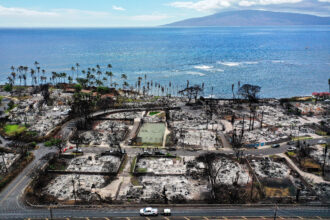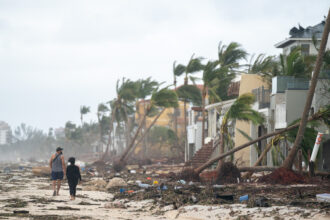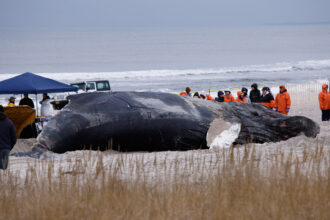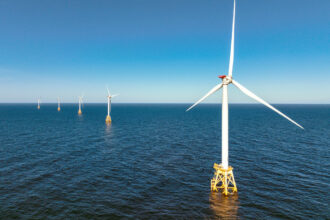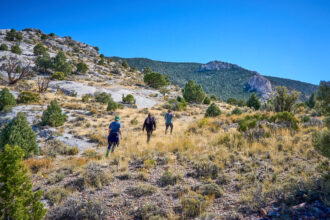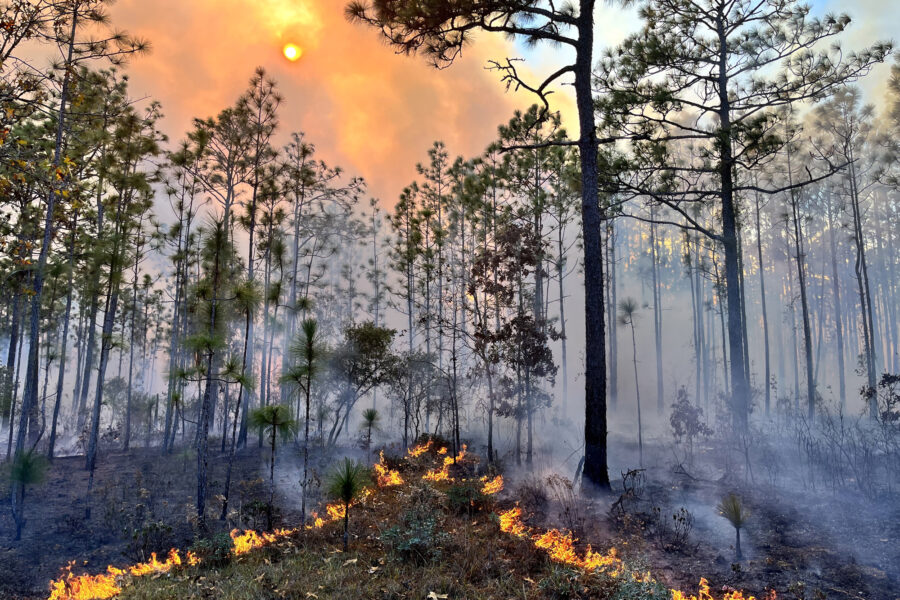In 2014, an unprecedented marine heat wave engulfed the west coast of North America, pushing ocean temperatures up to 7 degrees Fahrenheit higher than usual in some areas. Dubbed “The Blob,” this stretch of unusually warm water cooked marine species across the Northeast Pacific, especially hammering populations of sardines and small crustaceans known as krill.
Though these creatures are tiny, they help make up the base of the food chain, and their disappearance caused widespread—and unexpected— changes across the ecosystem. Humpback whales went in search of anchovies in the absence of their other diet options, which pushed them closer to coastlines and directly into fishing lines from the Dungeness crab industry, one of California’s largest fisheries.
As a result, whale entanglements spiked from 10 in 2014 to 53 in 2015 and 55 in 2016, while other marine species such as sea turtles also faced the fallout of warming waters and dwindling food supplies.
“That heatwave in particular was sort of useful because it provides this window into the future of what conditions might be like in a warmer ocean,” said Chris Free, a marine researcher at the University of California, Santa Barbara who extensively studied the Blob. “But it’s also this stress test that reveals the things that we need to address to have a more robust management system.”
Marine heatwaves like the Blob are becoming increasingly common as climate change accelerates, and can have profound impacts for fisheries, a growing body of research finds. But now, scientists may have figured out a way to forewarn how these acute ocean warming events will affect whale and sea turtle habitat up to a year in advance, giving fishers time to avoid catastrophic human-wildlife conflicts.
In a new study published today in the journal Nature Communications, researchers—led by Stephanie Brodie, a research scientist at the Commonwealth Scientific and Industrial Research Organization in Australia—combined data from two existing conservation management tools into a forecasting model, which they put to the test by retrospectively trying to predict impacts from past marine heatwaves between 1981 and 2020. They tapped into the Habitat Compression Index, which monitors when cooler, nutrient-rich waters whales use are pushed toward the coast into fishing areas, and another tool that is used to track when higher than normal sea surface temperatures may bring more loggerhead sea turtles into the Southern California coastal region.
“Instead of trying to reinvent the wheel … we’re already just using the exact same tools that are being used by management and used by fishermen,” Brodie said.
The forecast was able to predict when animal habitat was compressed closer to the coast with significant accuracy several months before the event, sometimes even close to a year in advance. For example, 94 percent of their forecasts were able to correctly identify high habitat compression for whales throughout the Blob marine heatwave from March 2014 to December 2016.
Striking a Balance Between Conservation and Fishing
The Dungeness crab industry is one of California’s most lucrative fisheries, with the delicacy bringing in $30 million to $90 million annually.
After the Blob, the California state government created the Risk Assessment and Mitigation Program (RAMP), a group that meets monthly to establish temporary fishing closures or other management decisions when whale entanglement risk is high. Currently, the meetings consider historical and current conditions in California waters to make these decisions, but a forecasting system could help managers assess the likelihood of future human-whale interactions and provide ample time to decide on and prepare for responses, according to the new paper. For example, the state can set restrictions on gear usage or plan fishery closures when there is likely to be a high volume of whales in the area.
By doing this “you can strike a better balance between conservation and sustaining a viable fishery,” Brodie said. Currently, Brodie is in talks with the National Oceanic and Atmospheric Administration to determine how the findings from this new study could become operational in the U.S., such as developing long-term forecasts each month.
This story is funded by readers like you.
Our nonprofit newsroom provides award-winning climate coverage free of charge and advertising. We rely on donations from readers like you to keep going. Please donate now to support our work.
Donate NowThese forecasts could help support proactive management, but they are based on models, meaning that there is room for error and “false positives,” which may predict changing conditions that never end up happening, according to Free, who was not involved in the study. And seasonal delays, early closures or restrictions in the Dungeness crab industry can have massive costs; a recent study found that total revenues would have been $14.4 million higher for California crab fishers in 2020 if the season hadn’t been delayed for a month.
“I think that could be a real potential burden to fishing communities if closures are scheduled and expected impacts never come to fruition,” said Free, adding that a bit more attention by the study’s authors to the impact of false positives “could have been really helpful.”
“But overall, I thought the study was really well done,” he said.
California isn’t the only area that could benefit from this forecasting approach, according to the study. The researchers were able to use fairly low-resolution global forecasts rather than regional data, which can be expensive and time-consuming to model. This could allow governments in areas with fewer resources, such as developing nations, to use these tools without massive technological investments, Brodie said.
“You can go ahead and work on ecological forecasts in your region at that global level,” Brodie said. “I really want that to empower the field to keep marching forward because we don’t have time to spare at the moment. We need tools right now to help prepare and adapt to climate change.”







